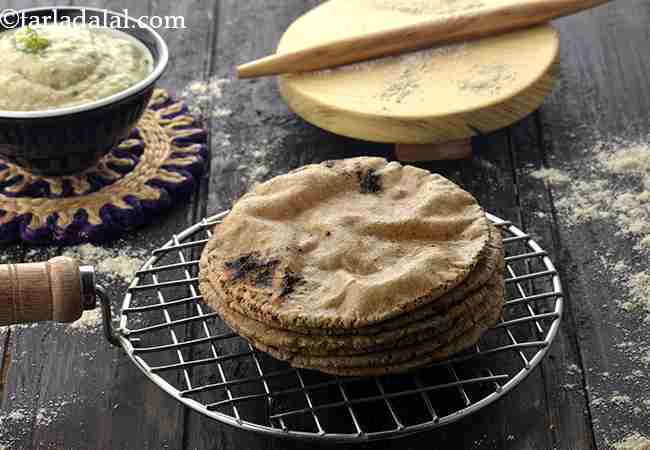One serving (160 grams) of Palak Mangodi gives 168 calories. Out of which carbohydrates comprise 84 calories, proteins account for 20 calories and remaining calories come from fat which is 46 calories. One serving Palak Mangodi provides about 8 percent of the total daily calorie requirement of a standard adult diet of 2,000 calories.
168 calories for 1 serving of Palak Mangodi, Cholesterol 0 mg, Carbohydrates 21.1g, Protein 9.3g, Fat 5.1g. Find how much fibre, iron, calcium, zinc, magnesium, phosphorus, sodium, potassium, folic acid is present in Palak Mangodi.
See palak mangodi recipe | Rajasthani palak mangodi sabzi | mangodi palak |
palak mangodi is a Rajasthani sabzi made from palak and mangodi. Learn how to make mangodi palak.
Jodhpuris are extremely fond of moong dal mangodis, which they cook in a variety of ways. Their food includes a lot of greens, so that is perhaps how this palak mangodi combination came about.
Mangodis tossed in a spicy spinach gravy makes a mouth-watering Palak Mangodi sabzi. You can make mangodis very easily at home or you can buy them in packets from specialty stores.
Moong dal mangodis are more common than urad dal mangodis which are made in some parts of Rajasthan.
Serve palak mangodi sabzi with bajra roti or jowar roti.
Is Palak Mangodi healthy?
Yes, this recipe is good for diabetics, heart and weight loss.
Let's understand the ingredients of Palak Mangodi .
What's good in Palak Mangodi .
1. Yellow Moong Dal : used to make mangodi. The fibre (4.1 g in ¼ cup) present in yellow moong dal prevents the deposition of bad cholesterol (LDL) in the arteries which promotes a healthy heart in turn. Packed with nutrients like zinc (1.4 mg), protein (12.2 mg) and iron (1.95 mg), yellow moong dal helps to maintain the elasticity of your skin and help to keep it moist. Fiber, potassium and magnesium from yellow moong dal will work together to regulate blood pressure and soothe the nerves and is diabetic friendly. See here for details of 7 amazing benefits of yellow moong dal.
2. Spinach, baby spinach (Palak) : Spinach is one of the richest plant sources of Iron and it should be part of a healthy diet for everyone. Raw spinach has 25% having soluble fiber and 75% insoluble fibre. Spinach is good for the heart, diabetics and eyes. Read this on the 17 benefits of spinach and why you should eat it.
3. Onions (pyaz, kanda) : Raw onions are a very valuable source of vitamin C – the immune building vitamin. Along with other phytonutrients from onions, it helps to build WBC (white blood cells) which serves as a line of defence against illness. Yes, it’s a source of many antioxidants, the most important one amongst them being Quercetin. The quercetin in Onions promotes production of HDL (good cholesterol) and lowers total cholesterol in the body. The sulphur in onions act as a blood thinner and prevents blood clotting too. This in turn would lower blood pressure and good for heart, diabetics. Read the benefits of onions.
Can diabetics, heart patients and over weight individuals have Palak Mangodi ?
Yes, this recipe is good for diabetes, heart and weight loss.
The fibre (4.1 g in ¼ cup) present in yellow moong dal (used to make mangodi) prevents the deposition of bad cholesterol (LDL) in the arteries which promotes a healthy heart in turn. Packed with nutrients like zinc (1.4 mg), protein (12.2 mg) and iron (1.95 mg), yellow moong dal helps to maintain the elasticity of your skin and help to keep it moist.
Can healthy individuals have Palak Mangodi ?
Yes, this is good and healthy.
What to have palak mangodi with ?
We highly recommend having a bajra roti, jowar roti and whole wheat roti to make a healthy combination. Note that when you combine any dal with any cereal ( bajra, jowar, ragi, whole wheat ) then the protein quality is enhanced.

Jowar Roti
Palak Mangodi is rich in below macronutrients, vitamins and minerals given in descending order (highest to lowest).
- Vitamin A rich recipes, Beta Carotene : Vitamin A is crucial for healthy vision, cell growth and healthy skin. Sources of vitamin A include yellow-orange fruits and vegetables like carrots, mango, papaya, peach, tomatoes, pumpkin etc. and other vegetables like spinach, kale, fenugreek leaves, broccoli, capsicum etc. 174% of RDA.
- Folic Acid (Vitamin B9): Folic acid is an essential vitamin required throughout pregnancy. Folic acid rich Indian foods (kabuli chana, chana dal, yellow moong dal, urad dal, tooval dal, til ) 110% of RDA.
- Vitamin C : Vitamin C is a great defence against coughs and colds. Have citrus fruits, lemons, vegetables ( capsicum, broccoli, cabbage). 109% of RDA.
- Magnesium : Magnesium is required for formation of bones and teeth. It helps in the metabolism of calcium and potassium. % of RDA. magnesium rich Indian foods like leafy vegetables (palak, broccoli, kale), pulses ( rajma, chawli, moong ), nuts (walnuts, almonds) , cereals ( jowar, bajra, whole wheat flour, dalia). 36% of RDA.
- Vitamin B2 (riboflavin) : Vitamin B2 enables the production of red blood cells that contribute to the rise in your energy levels. So have more milk, curds, eggs and green leafy vegetables. 36% of RDA.